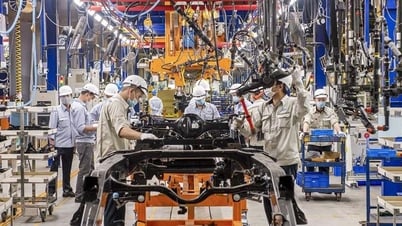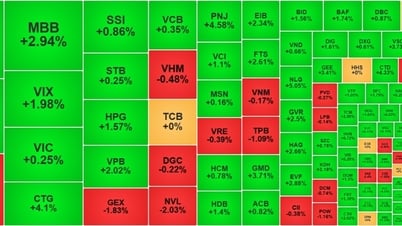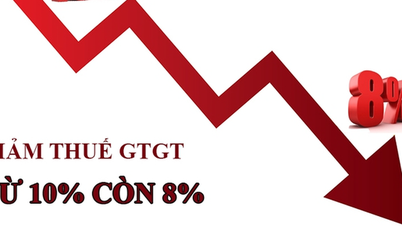 |
| Mr. Phillip Wright |
A survey conducted by the National Cyber Security Association (Vietnam) in December 2024 showed that one in every 220 smartphone users faced online scams. In 2024, Vietnamese people lost a total of 18.9 trillion VND, equivalent to 744 million USD due to online scams (according to Vietnamese lose $744M to online scams in 2024 - VnExpress International).
According to the Global Initiative, in 2023, Vietnam had the highest increase in deepfake fraud in the Asia Pacific region (25.3%), followed by Japan at 23.4% (according to Rogue replicants: Criminal exploitation of deepfakes in South East Asia | Global Initiative).
In today’s modern world where technology is everywhere, we share our personal data on many platforms, for example, to open a bank account, create a social media account, register for an online course or register for a website membership, or even to have fun with video editing or photo editing applications. When our data is put online, we need to ask the question: How will this data be protected?
How do banks protect their customers?
With 87% of adults in Vietnam having a bank account and around 95% of transactions being conducted via online channels, how banks can protect customers’ personal data is more important than ever.
Biometrics, which is a preferred security gateway in Vietnam, remains one of the most advanced authentication tools available today to prevent AI-related fraud attempts. However, despite its ability to enhance security, biometrics can still be faked to fool the system since behavioral biometrics are not yet available. Additionally, disparate systems may not integrate, creating security vulnerabilities, while poor encryption and centralized storage increase the likelihood of data leaks resulting from breaches.
Banks in Vietnam are now implementing multi-layered security approaches. Investing in AI and advanced machine learning algorithms is crucial to detect real-time anomalies caused by deepfake technology.
When people think of banking, they often think of traditional concepts, but banks have been investing in improved infrastructure and new authentication services for many years. They also have a comprehensive security strategy, including partnerships with cybersecurity companies to provide comprehensive training programs for bank employees, as well as campaigns to raise awareness among customers about the risks associated with biometric data.
Another important factor for banks to build a strong defense is having strong policies and regulations that guide ethical and security compliance when using biometric data.
This is also where we can call for collaborative efforts between regulators, banks and technology providers. This collaboration should focus on creating a unified standard for biometric data collection and authentication processes to ensure compatibility and security across platforms. Policymaking is an important enabler, with the State Bank and the Ministry of Public Security playing an important role in developing clear legal frameworks to protect user data and privacy, and developing biometric identification infrastructure for multi-factor authentication. Furthermore, seamless integration of biometric technology into existing banking systems would facilitate ease of use and security. And finally, a Vietnam Biometric Trust Network could serve as a secure central platform for data sharing and standardization between banks and regulators.
And how do you protect yourself?
Banks have taken a number of steps to protect their own data and that of their customers from any cyber security threats in today’s digital age. However, the people who can best protect their data and user identities are themselves. We are warned that deepfake technology will continue to improve rapidly in 2025, which means that it will be even harder to distinguish between real and fake content, and therefore our biometric data will be more vulnerable to being faked. Therefore, banks like HSBC always warn customers to never transfer money when threatened, not to click on links or share personal information on any suspicious platforms or to any strangers, and never share OTP, CVV codes with anyone, including bank staff.
As cybercriminals’ tactics evolve, be vigilant about your personal data when it’s online. Regularly updating your passwords and using multi-factor authentication can add an extra layer of security. And finally, stay informed and up-to-date on new fraud trends.
Advanced technology has brought us convenience and better experiences. However, cyber security risks are still lurking around. Banks have a responsibility to upgrade their systems, improve customer experience and protect their data and assets. Meanwhile, each individual also needs to take responsibility for their own personal data because it is an invaluable asset.Source: https://thoibaonganhang.vn/danh-tinh-cu-a-ban-gia-bao-nhieu-163683.html


![[Photo] Many people in Hanoi welcome Buddha's relics to Quan Su Pagoda](https://vphoto.vietnam.vn/thumb/1200x675/vietnam/resource/IMAGE/2025/5/13/3e93a7303e1d4d98b6a65e64be57e870)
![[Photo] Prime Minister Pham Minh Chinh receives Ambassador of the French Republic to Vietnam Olivier Brochet](https://vphoto.vietnam.vn/thumb/1200x675/vietnam/resource/IMAGE/2025/5/13/f5441496fa4a456abf47c8c747d2fe92)
![[Photo] President Luong Cuong awarded the title "Heroic City" to Hai Phong city](https://vphoto.vietnam.vn/thumb/1200x675/vietnam/resource/IMAGE/2025/5/13/d1921aa358994c0f97435a490b3d5065)

![[Photo] President Luong Cuong attends the inauguration of the international container port in Hai Phong](https://vphoto.vietnam.vn/thumb/1200x675/vietnam/resource/IMAGE/2025/5/13/9544c01a03e241fdadb6f9708e1c0b65)



















































































Comment (0)